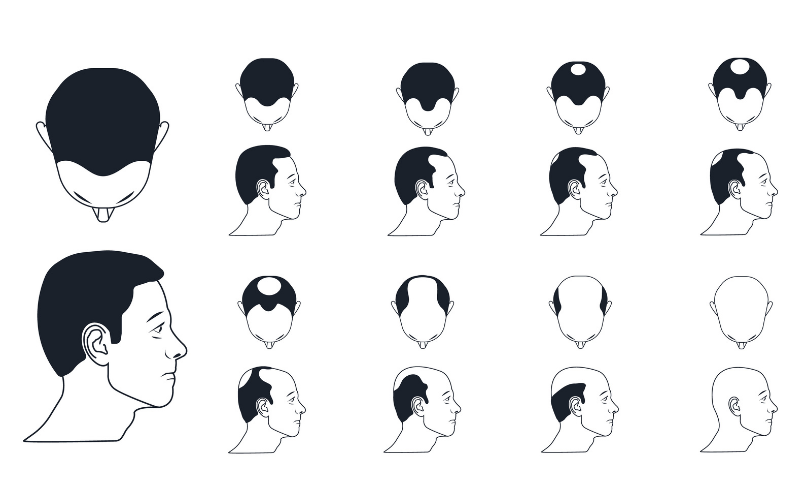Men’s Hair Loss
Get the Facts About Men’s Hair Loss
Hair is simple in structure, but has important functions in social functioning, and the FUE Doctors are experts in this field.
Hair loss treatment for men
Androgenic alopecia or Male Pattern Baldness (MPB) is responsible for the vast majority (94%) of hair loss in men. Whilst there are many possible reasons people lose hair (including serious disease, reaction to certain medications and in rare cases extremely stressful events), most hair loss in men can be blamed on heredity. This type of hair loss can come from either or both parents and develops in most men at some stage in their lives.
Sufferers of male pattern baldness are actually inheriting hair follicles with a genetic sensitivity to DHT. Hair follicles that are sensitive to DHT begin to miniaturise, shortening the lifespan of each hair follicle affected. Eventually, these affected follicles start producing finer hair until eventually hair growth stops completely.
Male pattern baldness is generally characterized with the onset of a receding hairline and thinning crown. Hair in these areas including the temples and mid-anterior scalp appear to be the most sensitive to DHT. This pattern eventually progresses into more apparent baldness throughout the entire top of the scalp, leaving only a rim or “horseshoe” pattern of hair remaining in the more advanced stages of MPB.
It usually takes 15-25 years to go bald, however, some men go bald in fewer than five years. Treatment can usually prevent further hair loss and often assist in hair regrowth.
The myriad of hair loss products, procedures and techniques available today makes your decision about what to do all the more confusing. There are a range of successful treatments available but the key is to firstly diagnose your hair loss concerns and secondly, let us recommend the best treatment for you.
The Norwood Scale for Male Baldness
A certain amount of hair thinning is a natural part of the ageing process for some people. But if you have sudden or patchy hair loss, this may be a sign of an underlying disease or condition. For scalp and hair conditions requiring further analysis, it is recommended to meet with our trained Trichologist for a diagnosis.
To give you a guide, our most popular and successful treatments for men include:
Hair Transplantation – The Neograft, the leading FUE procedure provide a natural and permanent result.
Factor 4 – growth serum treatment
Nido® Synthetic Hair Implantation – instant hair by implanting synthetic hairs directly into the scalp.
Laser Therapy – stimulate hair to regrow and promote healthy scalp and hair at home.
PRP Platelet Rich Plasma – state of the art natural technique to stimulate growth using your own blood’s growth factors.
Medications, Treatments & Products.
Hair Thickeners & Concealers – an instant result to camouflage the problem
To explore your options and guide you through the solutions available to you, compare your hair loss pattern with the Norwood-Hamilton diagram shown above. The Norwood-Hamilton classifications were developed to help determine typical hair loss patterns. We will help determine which stage closely resembles you. Your stage of hair loss will determine the most appropriate option for you.
Your next step is to book your confidential Free Hair Health Check. Our highly trained consultants and technicians can assess your needs and will suggest the best hair loss solution for you.

